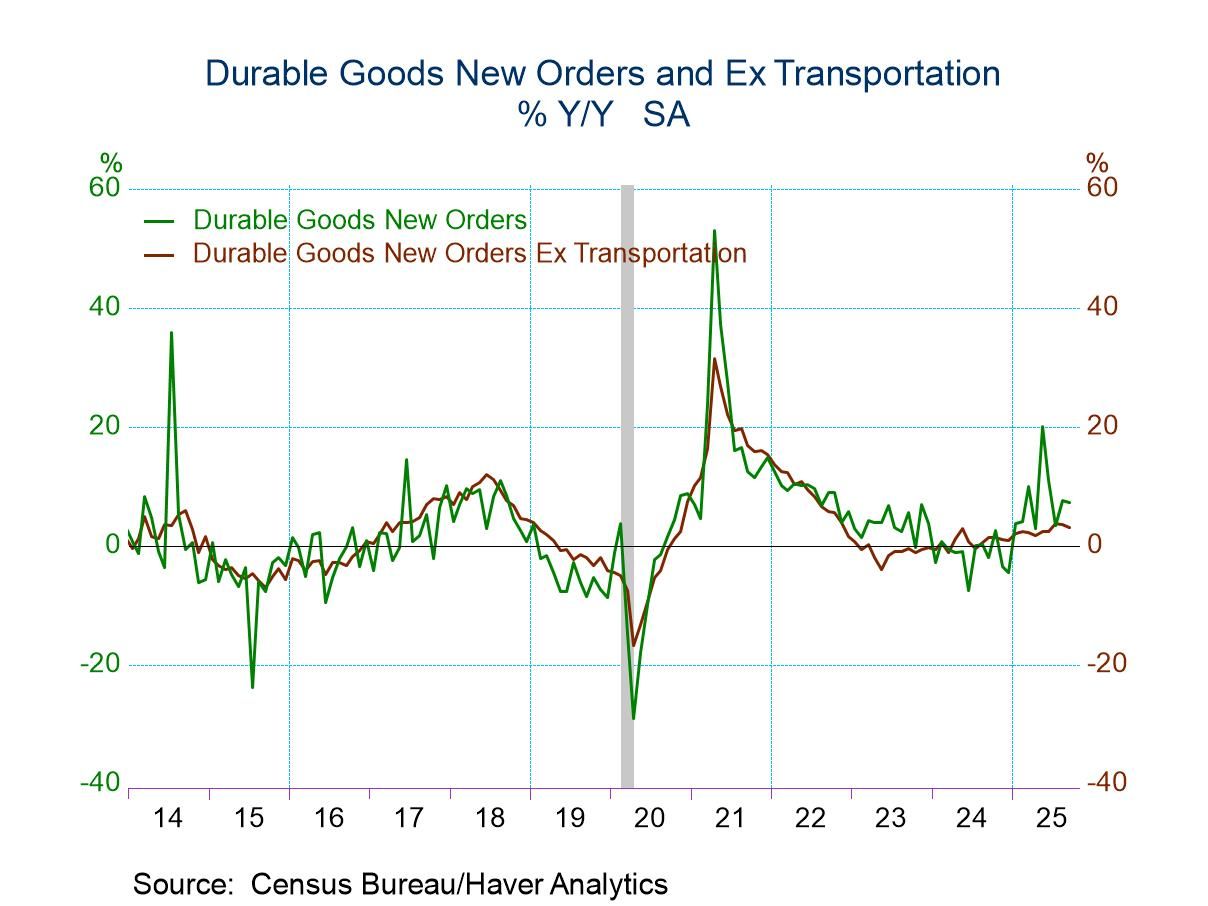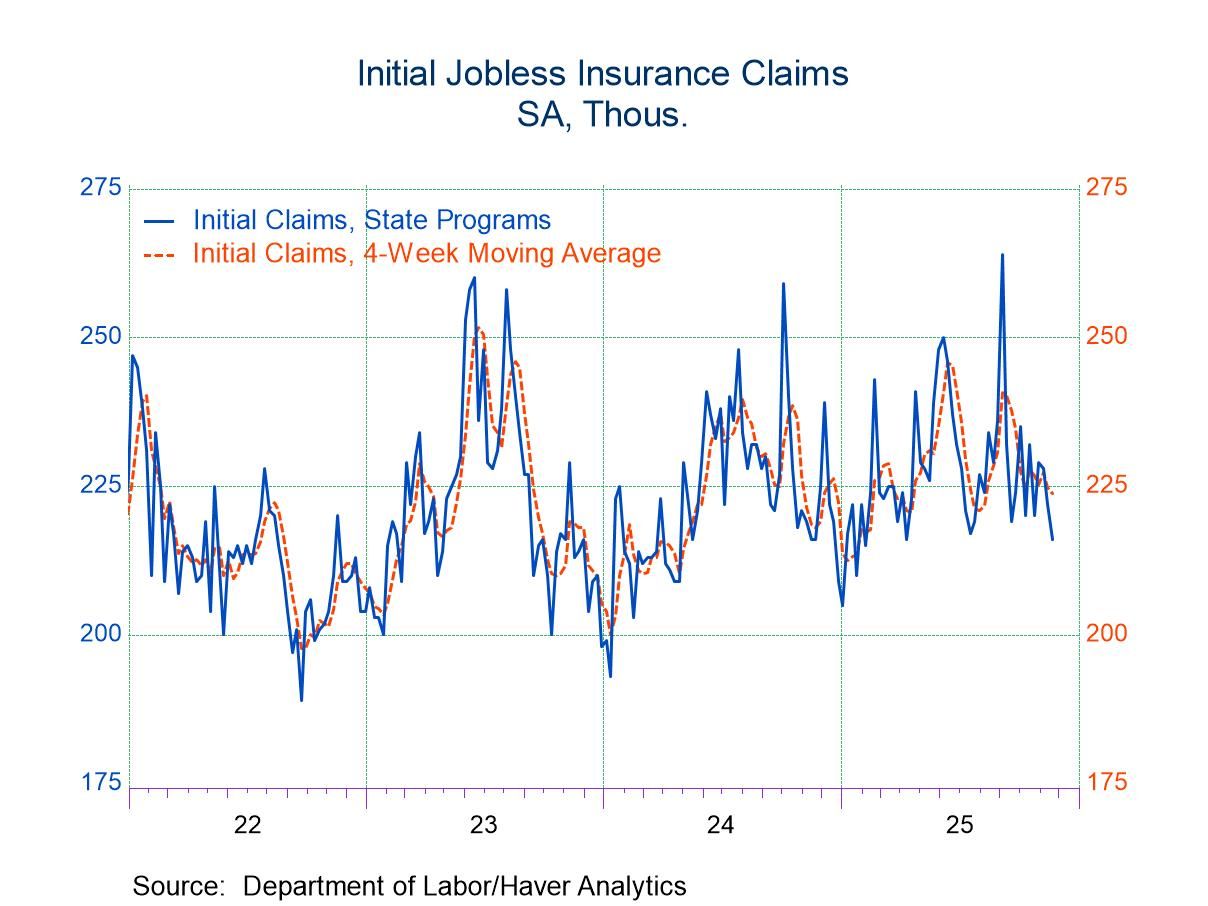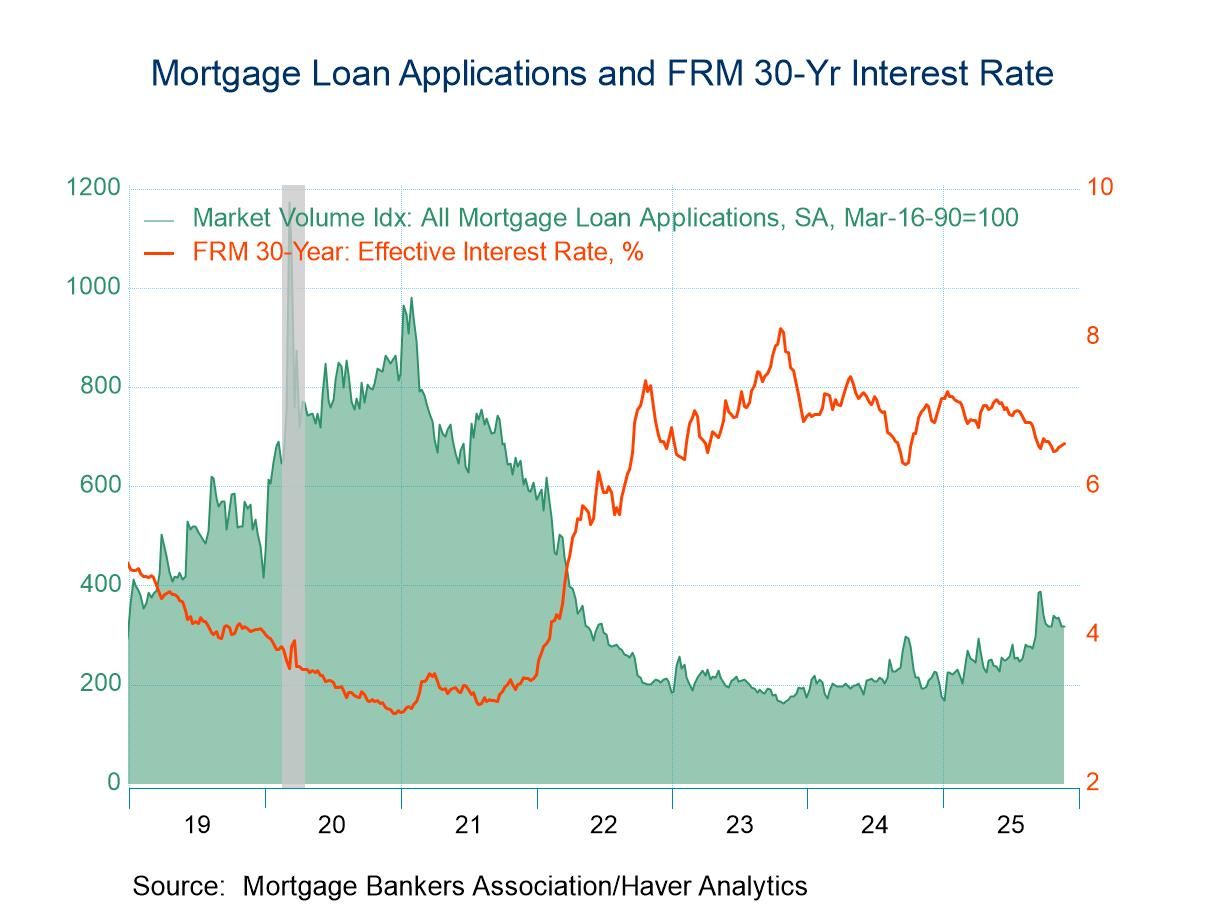U.S. Productivity Rebounded in Q2; Unit Labor Costs Slowed
by:Sandy Batten
|in:Economy in Brief
Summary
- Nonfarm business productivity increased 2.4% q/q annualized in Q2, more than reversing the 1.8% quarterly decline in Q1.
- Compensation growth slowed to 4.0% from 5.0% in Q1.
- Consequently, unit labor cost growth slowed markedly to 1.6% from 6.9% in Q1.
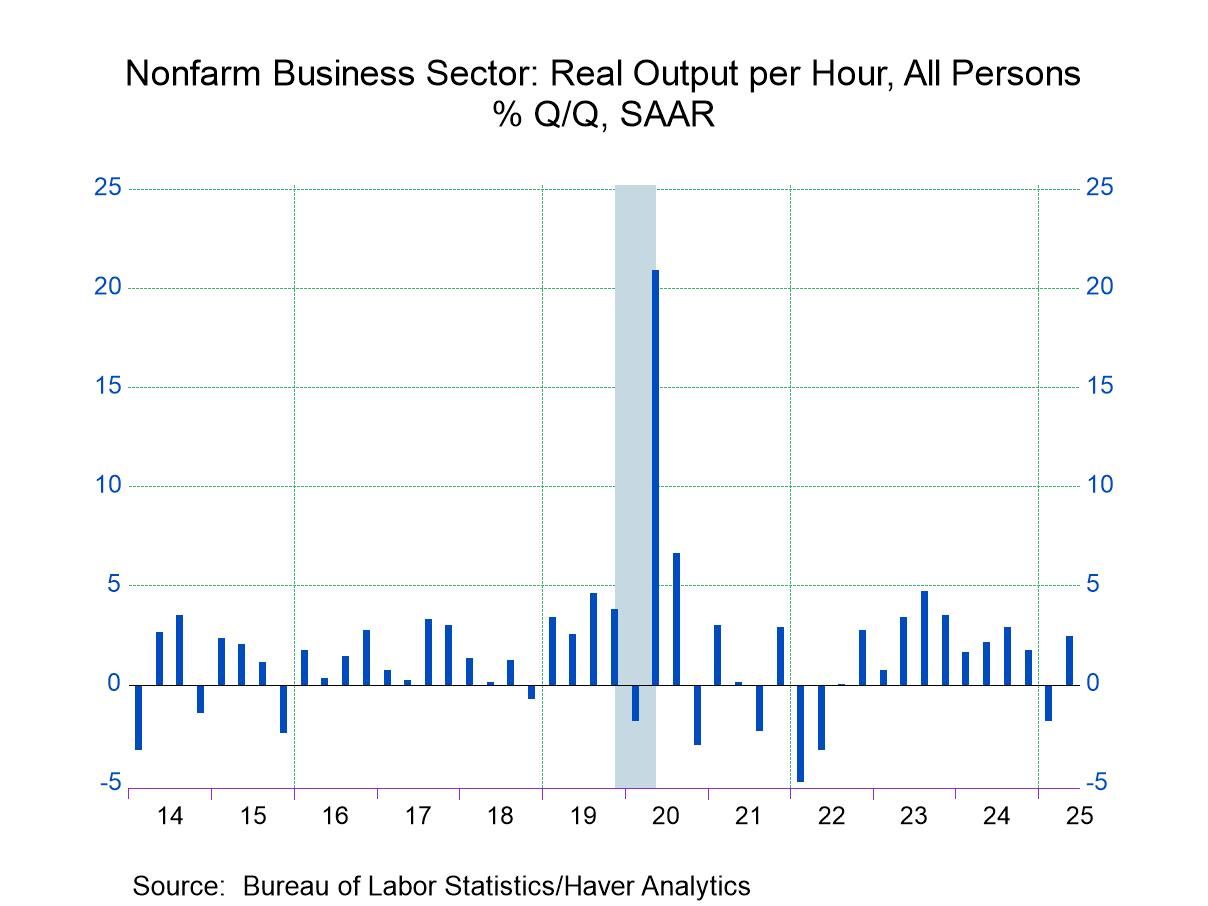
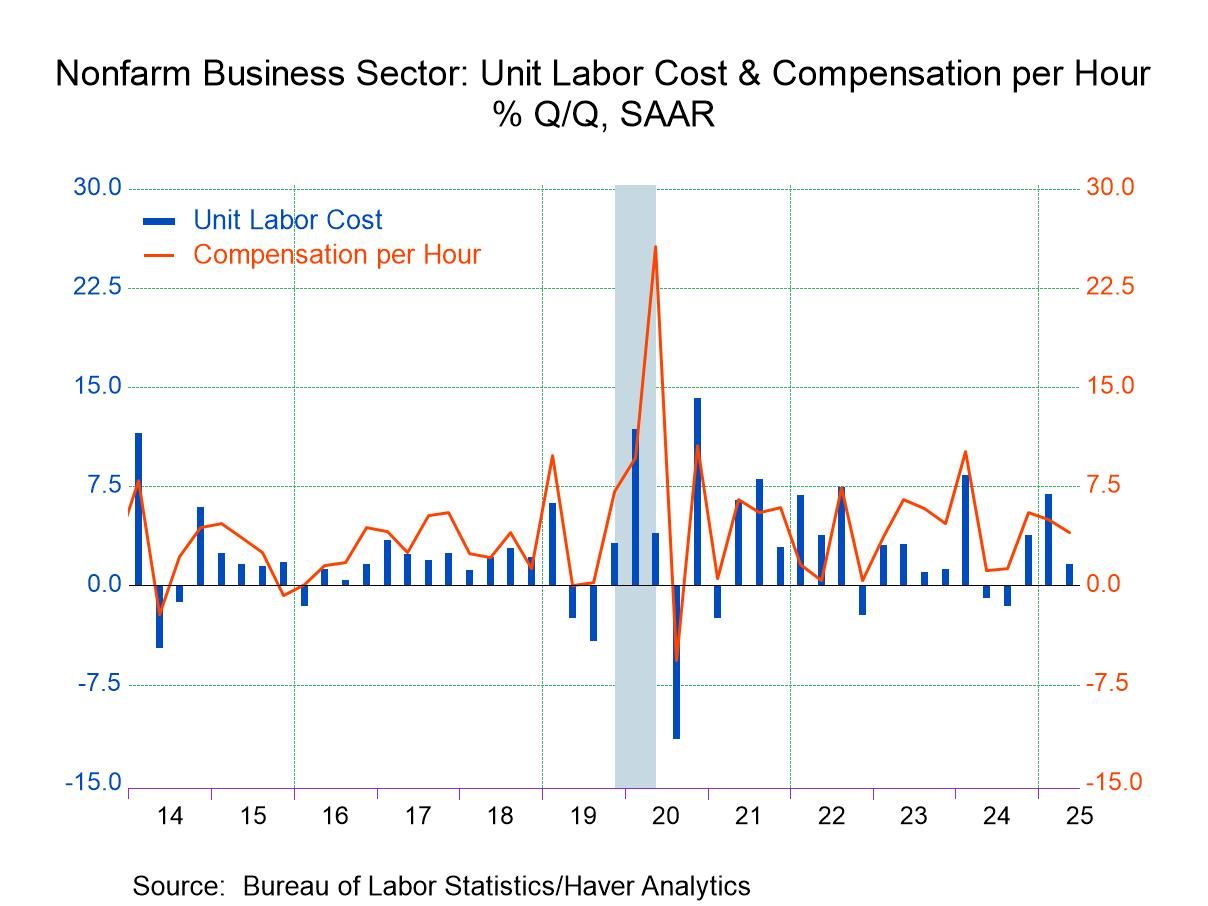
Nonfarm business labor productivity (output per hour) rebounded in Q2, increasing 2.4% q/q (SAAR) after having fallen 1.8% in Q1 (revised down from -1.5%). A 2.0% quarterly increase in Q2 was expected by the Action Economics Forecast Survey. Compared to a year ago, productivity growth edged up to 1.3% in Q2 from 1.2% in Q1.
Real value added (output) advanced 3.7% q/q in Q2 after declining 0.6% in Q1. Hours worked increased 1.3% q/q, up only marginally from a 1.2% gain in Q1. Compensation growth slowed to 4.0% q/q in Q2 from 5.0% in Q1 and 5.5% in last year’s Q4. As a result, unit labor costs advanced only 1.6% q/q in Q2, down markedly from a 6.9% quarterly gain in Q1. However, on a y/y basis, unit labor costs increased 2.6% y/y in Q2 versus 2.0% in Q1. Annual unit labor costs have been on an uptrend since the middle of last year.
Factory sector productivity slowed to 2.1% q/q (SAAR) in Q2 from a downwardly revised 3.3% in Q1 (previously 4.4%). Compared with a year ago, manufacturing productivity increased 1.5% in Q2, its fastest annual advance since Q2 2021. Manufacturing compensation growth slowed to 3.8% q/q in Q2 from 6.3% in Q1. Accordingly, unit labor cost growth slowed to 1.7% q/q in Q1, its slowest pace in four quarters, from 2.9% in Q1.
The productivity and labor cost data are available in Haver’s USECON database. The Action Economics expectations figures are in the AS1REPNA database.
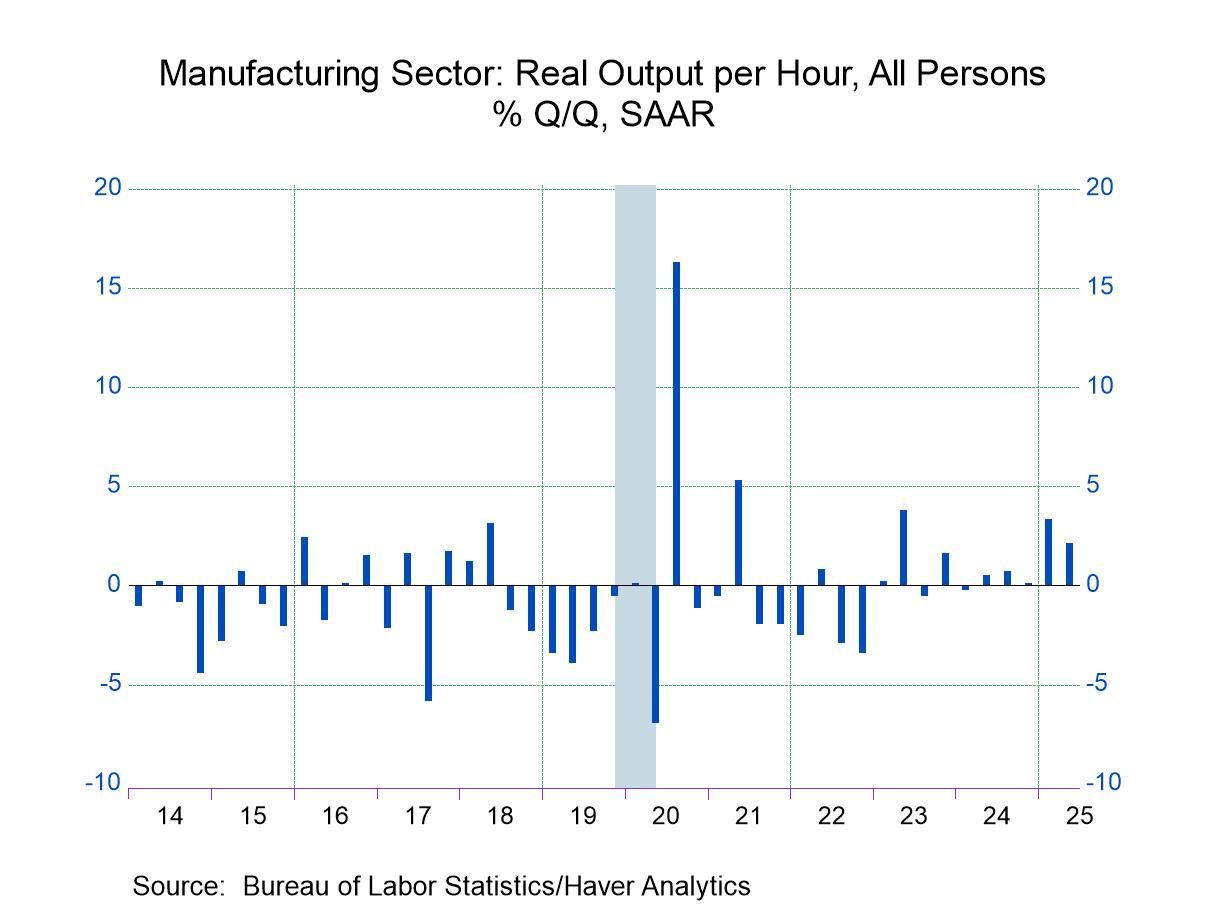
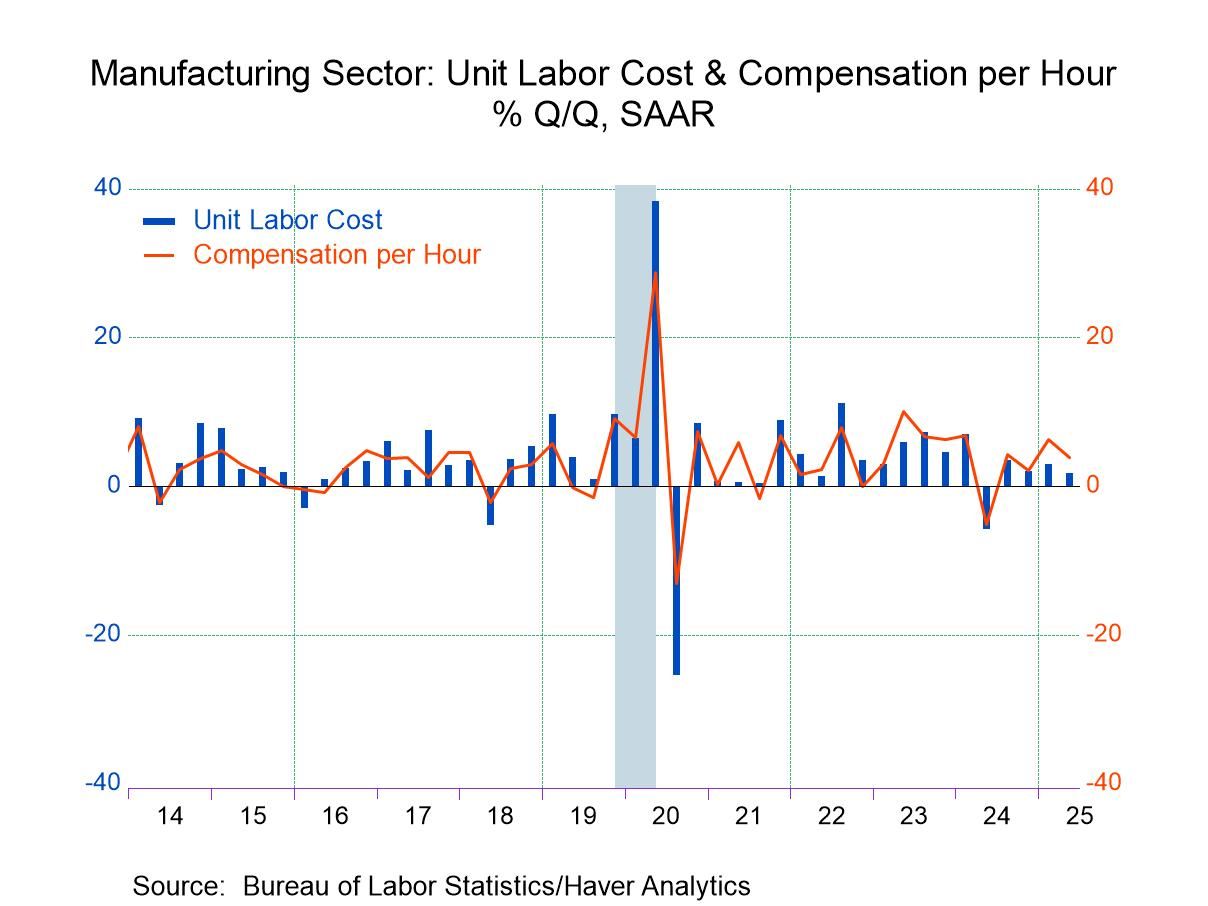
Sandy Batten
AuthorMore in Author Profile »Sandy Batten has more than 30 years of experience analyzing industrial economies and financial markets and a wide range of experience across the financial services sector, government, and academia. Before joining Haver Analytics, Sandy was a Vice President and Senior Economist at Citibank; Senior Credit Market Analyst at CDC Investment Management, Managing Director at Bear Stearns, and Executive Director at JPMorgan. In 2008, Sandy was named the most accurate US forecaster by the National Association for Business Economics. He is a member of the New York Forecasters Club, NABE, and the American Economic Association. Prior to his time in the financial services sector, Sandy was a Research Officer at the Federal Reserve Bank of St. Louis, Senior Staff Economist on the President’s Council of Economic Advisors, Deputy Assistant Secretary for Economic Policy at the US Treasury, and Economist at the International Monetary Fund. Sandy has taught economics at St. Louis University, Denison University, and Muskingun College. He has published numerous peer-reviewed articles in a wide range of academic publications. He has a B.A. in economics from the University of Richmond and a M.A. and Ph.D. in economics from The Ohio State University.



